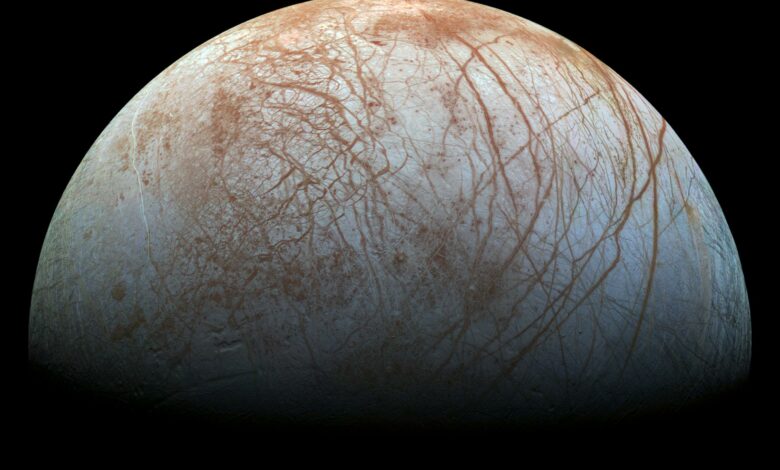
all about Europa Clipper The mission is very big. Sent to investigate Jupiter’s ice-covered and probably habitable second moon, it is qualified by NASA as a major strategic science mission, with this designation given its extreme cost, the extreme technical capabilities of its instruments, and the science Tells the importance. Expects to do. It is the seventh planetary science mission to receive the LSSM designation, an elite group that includes historic missions. sailor Test And Mars Rovers.
The spacecraft itself is huge: the largest ever built by NASA. Twenty feet long, 72 feet wide when its panels are deployed – about the length of an 18-wheeler – more than 13,000 pounds, about half of that propellant, the rest being the lightest-weight technology. Look at this animal.

Getting this solar-powered monster to Europa will be a tough journey. Its first scheduled launch date was delayed due to Hurricane Milton. reaper Falcon Heavy Block 5 launched from Kennedy Space Center in Florida on Monday with more than 5 million pounds of thrust, and it won’t be headed straight for Jupiter. Instead it will fly by in orbit around Mars in February 2025 to take gravity aidIt will then fly past Earth again in December 2026, increasing its speed even further. With this velocity, it still won’t reach Jupiter until 2030 and Europa until 2031. Even our little neighborhood of space is big.
but the most important thing Europa Clipper– Since the discovery of Europa’s underground ocean, scientists have logically wondered which science fiction writers Stanley G Weinbaum Arthur C. Clarke has imagined the extraordinary—this is as good as it gets.
reaper It will make no attempts to land there, instead entering a complex orbit around Jupiter that will provide it with 49 flybys of Europa, some as much as 16 miles above the moon’s surface – to regularly sample plumes of ejected fluid. More than enough, and scientists estimate that it could be an acceptable means of harboring life.
Europa Manthan. Slightly smaller than our moon, it is covered in an icy crust 10 to 15 miles thick, floating above a sea of salt water perhaps 100 miles deep. that crust is crooked lines Can be easily seen from space. They are ridges in the ice, formed by the process of breaking, spreading, and refreezing of the crust, resembling a low-temperature version of our own tectonics. Although for different reasons, Europa’s surface, like Earth, boils and breathes and cracks and is constantly reborn.
Europa’s crust and oceans lie atop a rocky mantle and iron core, for reasons we don’t fully understand – the leading theory is tides from the impact of giant Jupiter – which generate enough heat to keep the oceans liquid. Does. This would mean that there would be hydrothermal vents on the ocean floor, sending huge amounts of energy upward into the ocean, much like undersea volcanoes on Earth would be discovered all over the world. And what do we find here around those vents? life. Relatively simple, harsh life, but when you break it down life is a very simple equation: water, a few organic molecules, and an inexhaustible energy source. Some biologists believe that life on Earth may have first formed by gathering on the banks of a Hadean river.black smoker,
Europa Clipper He will see the moon and taste it. In the ultraviolet and infrared, it will image the surface with unmatched detail. With magnetometry and ice-penetrating radar, it will dive deep into Europa’s ocean and beyond. With mass spectrometry it will sample the dust and vapor of Europa’s atmosphere, including plumes of liquid water flowing from the crust, and analyze them for organic compounds. If there is life out there, thriving in the darkness and heat at the bottom of the ocean, we may be able to find its signature.
And if we don’t, that’s okay too. There is countless value in learning everything we can about one of the rarities of our solar system, from taking apart its clockwork to understand how many unique ways worlds form in the universe. Progress also has its rewards. When Galileo discovered Europa along with Jupiter’s other largest moons, he thought he was seeing stars. But these four stars were bound in a line, and as he watched, night after night, they moved independently of the stellar background. One of them disappeared behind the planet; He became the first person to prove that not all celestial bodies revolve around the Earth. It would have taken just 421 years for Europa to become a blurry dot in a telescope, changing our entire concept of the universe to a world so real and tangible that we could put a spacecraft within a day’s walking distance of its surface. Are.
We are on our way.
